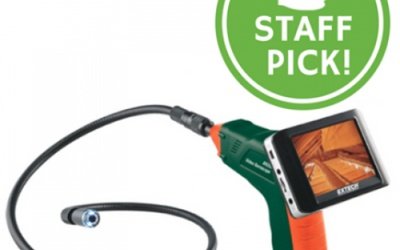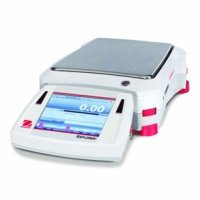Borescope Cameras: How to Read Specifications

A borescope is an instrument used to inspect narrow or hard-to-reach commercial/industrial systems and equipment. The design, inner workings and functionality of a borescope will vary substantially between brands. To help you distinguish between models and find the best for your needs, our scientists have compiled a list of key terms you will find in borescope camera specifications.
Borescope Camera and Camera Tube Terms
Camera Head Rating
Not all borescope camera head assemblies are created equal. So you can make proper comparisons between camera heads, specifications will often provide an Ingress Protection (IP) rating - i.e., referring to the standard of a camera head’s water and dust proofing. Ensure the borescope camera you choose is sufficiently robust for your applications.
Articulation
Articulation refers to the flexibility of a borescope’s camera tube or cable - either rigid or flexible. Suppose you’re looking for a borescope camera with a flexible camera tube. In that case, you will need to check the device’s specifications for the tube’s articulation capability, which will be listed in degrees.
Cable Length
A borescope’s cable length refers to the length of its flexible camera tube. This specification needs consideration to ensure you select a model with sufficient cable length to undertake your intended tasks.
Camera Diameter
Camera diameter refers to the size of the camera on the end of the tube. You must consider whether it will fit within the spaces it needs to operate.
Field-of-View
Field of view is the “cone of vision” that extends from the tip of the camera, noted in degrees (°). The wider the field, the larger the image the instrument will capture.
Camera Illumination
As borescope cameras investigate enclosed spaces, the measured area is often dimly lit or without a light source. Most borescope cameras address this by providing illumination around the camera. Check the specifications for the number or quality of LEDs and any features such as dimming or adjustable light settings.
Pixels
The smallest unit of information used to build a digital image is a pixel. Generally, any inspection camera with a 640×480 pixel (VGA) resolution is perfectly adequate.
Borescope General Terms
Recording Capability
This term is particularly relevant for professionals. Having the ability to observe an inaccessible space for everyday DIY applications might be sufficient. However, most professional applications also require image and video capture for later recall and downloading to a computer.
Operating Conditions
Operating conditions specifies the minimum/maximum temperature and humidity within which a borescope can reliably operate.
Borescope Monitor Terms
LCD Screen Resolution:
LCD screen resolution refers to the number of pixels within a monitor’s LCD, usually expressed as a pixel count along two axes, e.g., 320 x 240.
Frame Rate
The frame rate is the frequency at which frames in the borescopes screen sequence are displayed, usually referred to as frames per second (FPS).
Conclusion
Understanding the key terms in typical borescope specifications will help you determine the best product for your needs and budget.
Need advice or assistance finding the best borescope camera for your application? Speak with an Instrument Choice Scientist: Call 1300 737 871 or email [email protected].
Also interesting
At Instrument Choice, we proudly stock over 150 brands of scientific instruments and laboratory equipment. Our mission is to provide our customers with the widest selection of scientific instruments, all in one place, so you can measure anything and measure everything.
To help you find the best products to suit your application, Instrument Choice Scientists regularly spotlight new brands so you can better know what they offer you. This edition introduces UbiBot, a world-leading provider of smart IoT products and solutions

Join us to learn what is meant by the term “precision balance”, the unique qualities of this type of instrument, and how different products suit specific applications.
What is a precision balance? Find out here!


